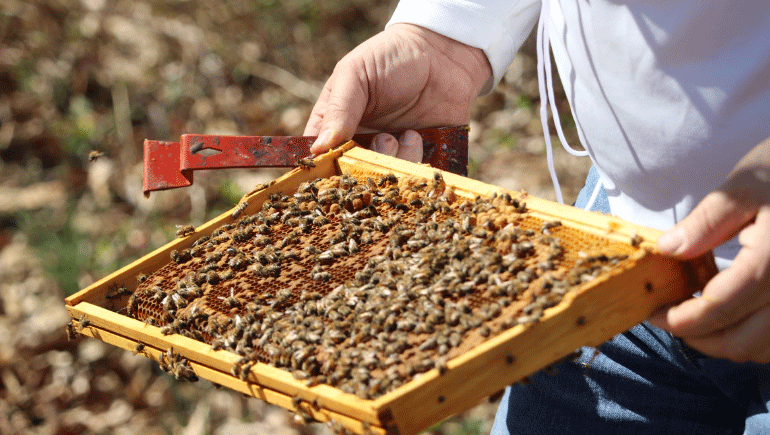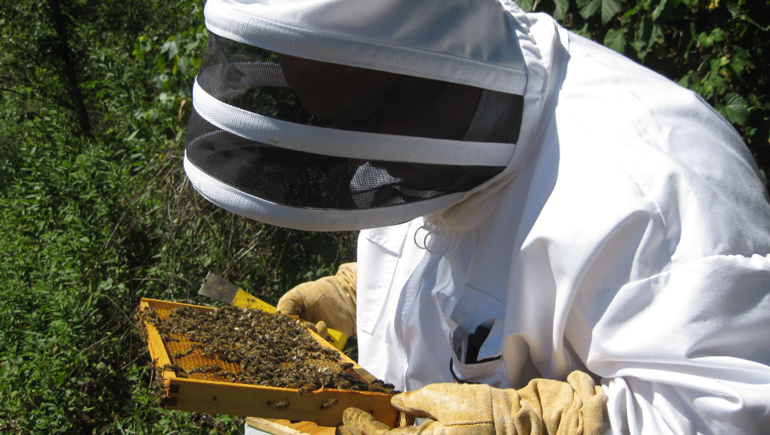
Bristol Myers Squibb facilities in Summit, New Jersey, and Paris are home to thousands of honeybees, a small part of the Company’s commitment to the environment.
The Paris site is home to four hives with approximately 45,000 bees in each hive.
“We initially put hives on the roof, but there was too much wind, and people could not see the evolution of the hives,” Servais explained. Now, the hives are kept “not too close to the occupants of the building, who can watch the bees from afar working on the life of the hives.”
At Summit West, Joe Chimento, associate director of facilities, acts as beekeeper in his free time with the help of several volunteers. He purchased the colonies as part of a research and sustainability project to enhance awareness and importance of pollinators in our environment.
A typical hive can have between 10,000 and 60,000 bees. Summit West presently has two hives.
“As stewards of large parcels of land, we are challenged to reduce our carbon footprint by reducing energy and water usage along with a reduction in waste while producing drugs and drug therapies for the patients we serve,” Chimento said. Part of this “go-green” concept is to put back natural resources through the creation of pollinator-friendly environments.
Chimento believes that in order to dream about the big stuff, we have to analyze the small stuff. “We dream about the universe, but we study subatomic particles to learn how the universe works. This is also true about our own environment. Answers to some of our societal ills may be found in lower order life systems that have withstood the test of time. We just need to listen harder to hear their story.”





